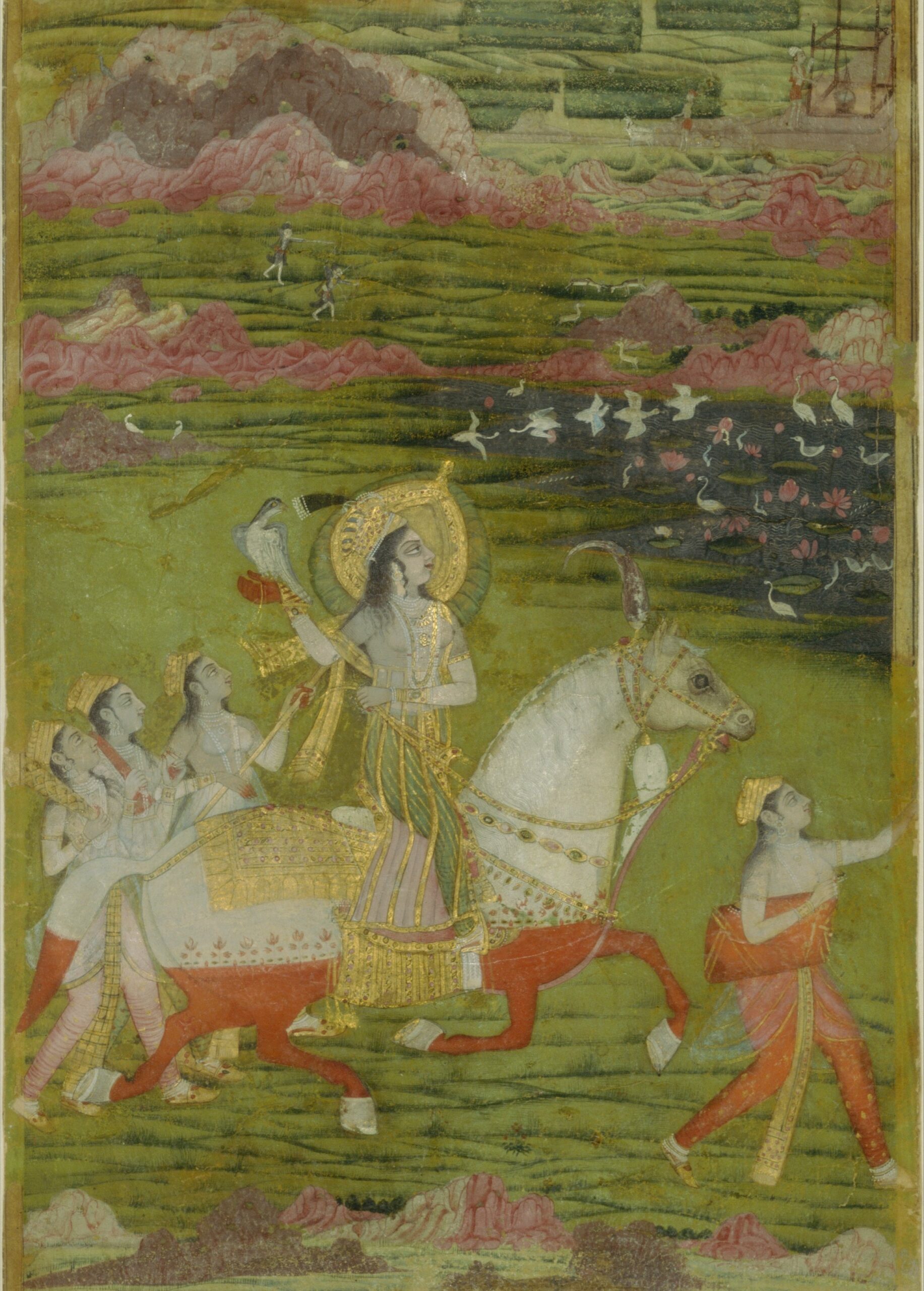As a country, India’s fashion history is distinctly eclectic. As I discussed in my last post, the way of dressing changed with distinct periods of history, socioeconomic prosperity, and cultural affluence. While such periods are common throughout fashion histories across the world, India is a case unto itself. In such a vast landmass as this, every individual region jealously guards its own ethnicity, history, culture, and clothing—and this plurality is what gives India its unique flavor.
That said, certain historical incidents have left enough impact to across the country as a whole, and ironically, in India, these events have always been—invasions. In my last blog, we looked at how the Greek invasion left traces of Indo-Greek elements in the dressing style of India. In this blog, we will take a look at how the Islamic influence shaped the sense of Indian clothing.
While India had trade relations with Arabs for over 4000 years, it was the early Muslim invasion of Sindh in the 7th century followed by frequent Ghurid invasions around the 12th century, that marked the beginning of a more solid and much more widespread Islamic influence in India.
The adoption of the veil
The constant raids and eventual conquest of India introduced an essential element in women’s clothing. This was the veil, or ‘ghunghat‘—a clothing item that was donned sparingly in the Indian subcontinent until then. Since the veil was also an integral part of the Islamic and subsequent Mughal culture of ‘purdah’ for women, later day Northern royals adopted it from their proximity to the Islamic influence, and it became an everlasting piece of women’s clothing in Northern and Western India to protect women from the male gaze.
In contrast, the lack of a veil in the clothing of women in Southern, eastern, and south-western India (not including Muslim women) is directly proportional to the amount of contact these regions had with the Islamic invaders, which was much less than the North/Northwestern part of India.

The veil obscuring the face from the male gaze: 18th-century painting from North India

A traditional painting of a South Indian woman without a veil by Raja Ravi Verma: 19th century
Introduction of stitched clothing
With the coming of Islam also came another quintessential new-world clothing inspiration—stitched clothing. Garments among both men and women had always been free-flowing before the coming of the Islamic rulers—tied in a variety of manners and kept in place with girdles and clasps. The concept of stitched clothing was of course known to Indians for many thousands of years—but the Islamic rulers and the feudal lords who drew their powers from them made it de rigeur.

A painting of Sultan Alauddin Khilji wearing a stitched robe with an overshirt
Mughal and Later Islamic Influence
With the coming of the Mughals, the Islamic influence in the dressing was elevated to a form of art. The almost pan-Indian spread of the Mughal kingdoms brought a certain degree of homogeneity into Indian clothing, with similar items of clothing prevalent in North, central, and parts of Southern India. Later day Islamic rulers of Muslim states like Awadh and Hyderabad took this forward, culminating with a distinct dressing style comprising two or sometimes three pieces of clothing items besides headgear, jewelry, and accessories. Both men and women adopted this style of clothing. For men, royalty or otherwise, the free-flowing dhoti or lungi was also assimilated as a lower garment. What is noteworthy is that for both men and women, the upper garment continued to be stitched.

An 18th-century painting from central India shows Chand Bibi, a Muslim queen, going hawking. She is wearing a smoky, translucent, tight choli (a short stitched bodice) with tight-fitting churidars (pants) in mint green striped with gold. Over both these, she wears a transparent Muslin ‘Peshawaz’ or overshirt with golden stripes and tassels, and a flowing golden sash is draped loosely around her arms. Her elaborate headdress and jewelry are also typically the costume worn by royal women.

Another 18th-century painting shows a Nizam (king) of Awadh, a northern princely state. He wears a voluminous transparent overshirt with gold borders covering his entire torso over a fitted vibrant tangerine ‘jama’ or robe underneath. He too, wears a jewel-studded golden sash dangling from his shoulders. His regal attire is complete with a turban and a profusion of jewelry.
Return of the sari
Variations, of course, existed—most notably in the South, South-Western, and Eastern India. Often, there were clear divisions emerging around ethnic and religious lines. For example, among the majority of Hindu women, the sari, that amazing unstitched six yards of clothing was slowly but surely, overruling the Islamic form of dressing. Women wrapped it in different styles, sometimes choosing to drape it over their heads and other times, not.

Traditional sari-wearing South Indian women. Painting by Raja Ravi Verma, 19th century
The Islamic influence on Contemporary Fashion
What Islam brought to the culture of the then-Indian society became an inherent part of our present-day heritage, assimilated with earlier existing styles and manners of clothing. They continue to survive in popular culture, with designers paying tribute to these influences time and again through contemporary styles. However, this was not to be the end of the evolution of Indian fashion. There was yet another significant chapter to be added, with the last and the most recent conquest that followed—in the hands of the British.
A contemporary Sabyasachi wedding ensemble featuring a short bodice and voluminous lehenga or skirt, complete with a transparent, face-covering veil.
By Parna Das
Recommend0 recommendationsPublished in Our Fashion Passion, Uncategorized




